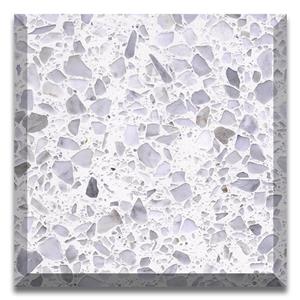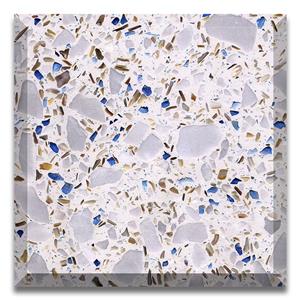How to Choose Terrazzo Colors
Terrazzo flooring is making a strong comeback in modern interiors because of its timeless style, durability, and design flexibility. People love its beauty, but choosing the right color is more than a personal preference—you need to understand the material, the space, and the atmosphere you want to create.
In this guide, we explain , explore its textures and styles, and share clear tips for selecting terrazzo colors that match your design goals.
1. What is Terrazzo?
If you've stepped into a trendy café with speckled floors or visited a high-end boutique with sleek patterned surfaces, you’ve likely seen terrazzo. At its core, terrazzo is a mix of marble, quartz, granite, glass, or other chips set in cement or epoxy resin. Once polished, it reveals a unique pattern that makes each surface one-of-a-kind.
Originally developed in Italy centuries ago to reuse marble scraps, terrazzo flooring has evolved into a versatile design element that works in both classic and ultra-modern spaces.
One of terrazzo's most important features is its terrazzo texture, which depends on the size and arrangement of the chips. Large chips create a bold, mosaic-like look, while smaller chips give a smoother, more subtle surface.

2. Terrazzo in Modern Design
Today, terrazzo design goes far beyond flooring. While it remains a favorite for homes, hotels, and retail spaces, designers now use terrazzo on countertops, walls, staircases, and even custom furniture.
The introduction of terrazzo slabs has expanded creative possibilities. These large pieces have continuous patterns without visible grout lines, allowing colors and textures to flow seamlessly. This makes terrazzo slabs ideal for open areas or spaces where you want a clean, smooth finish—like hotel lobbies, spacious kitchens, or feature walls.
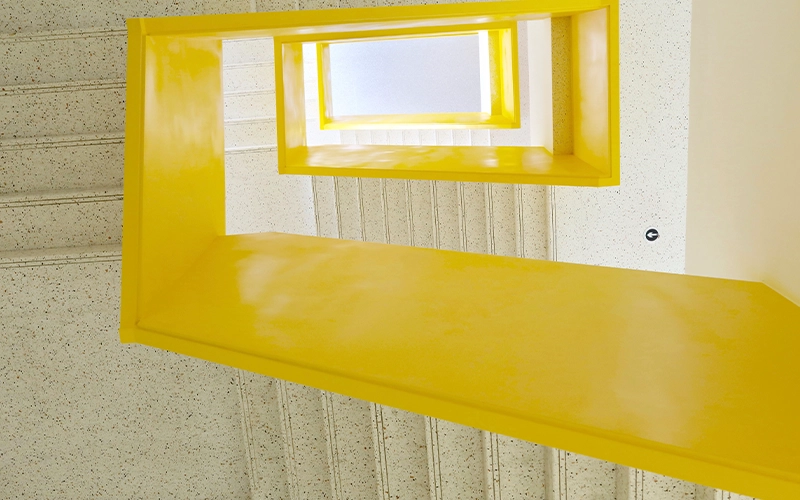
3. How to Choose the Right Terrazzo Color
a) Match the Function of the Space
The purpose of a room should guide your color selection:
Living rooms & lobbies – Light or neutral terrazzo creates an open, airy feel.
Kitchens & bathrooms – Darker terrazzo hides stains better and adds warmth.
Shops & offices – Strong contrasts, like black-and-white terrazzo or vibrant multicolor patterns, make a bold visual statement and reflect brand personality.
b) Consider Lighting
In bright spaces, dark terrazzo adds depth and elegance. In dimly lit areas, light-colored terrazzo reflects more light and makes the space appear larger.
c) Coordinate with Interior Style
Minimalist look – A single-color terrazzo with fine chips offers a clean, modern vibe.
Industrial or vintage style – Darker terrazzo with large, irregular chips adds character.
Nordic-inspired spaces – Soft terrazzo tones paired with natural wood create a warm and balanced atmosphere.
d) Think About Texture
The terrazzo texture changes with chip size and density. Decide whether you want your texture to stand out as a statement feature or blend softly into the background.
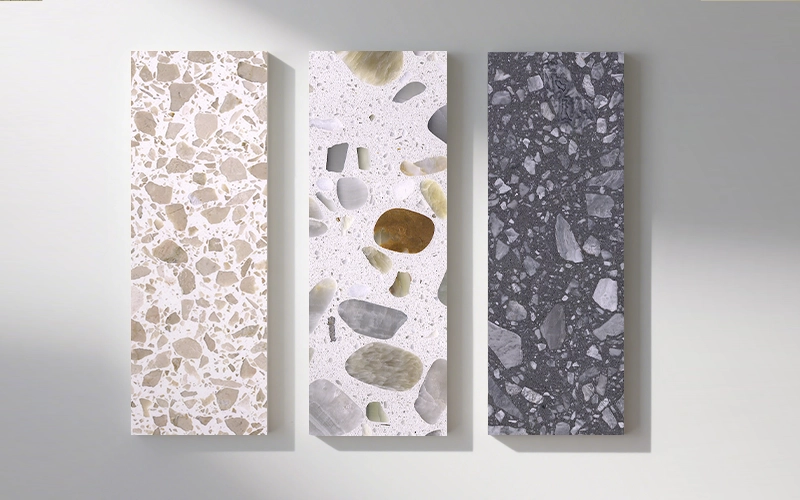
4. Color and Texture Combinations
Terrazzo offers endless combinations of base colors and chip materials:
Light gray base + black and white chips – A timeless choice that works in almost any setting.
Beige base + colorful chips – Fun and creative, great for play areas or offices.
Black base + metallic chips – Luxurious and dramatic, ideal for high-end interiors.
With terrazzo slabs, these combinations look even more striking because the smooth, continuous surface lets patterns and colors flow naturally.
5. Why Choose Terrazzo Slabs for Large Spaces
Large-format terrazzo slabs remove the breaks and grout lines you get with smaller tiles. This uninterrupted design is perfect for open layouts or spaces where you want a seamless visual effect.
Slabs also allow full customization—you can select the base tone, chip type, and density to match your exact vision. Whether you prefer a calm, understated design or a bold, artistic surface, terrazzo slabs give you the flexibility to achieve it.
6. Practical Tips for Picking Terrazzo Colors
Request large samples – Small samples might not fully show the terrazzo texture or color variations.
View in natural light – Lighting can change how colors appear.
Match with other elements – Coordinate terrazzo with walls, furniture, and fixtures.
Consider upkeep – Light terrazzo may show dirt faster, while darker tones hide it better.
Check durability – Ensure your terrazzo slab or tile can handle the foot traffic of its location.
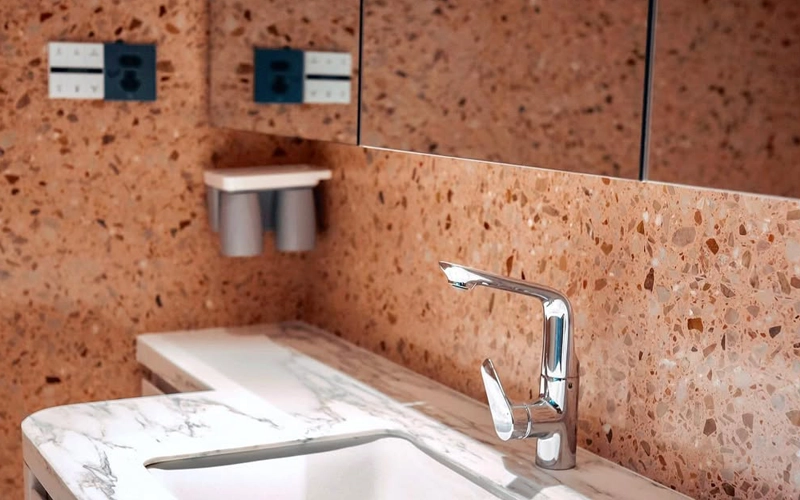
Conclusion
When you understand what is terrazzo, recognize how terrazzo texture affects design, and see the benefits of terrazzo slabs, you can confidently choose colors that enhance both beauty and function.
Whether you're adding terrazzo flooring to a home, designing a feature wall for a commercial project, or selecting custom slabs for a luxury kitchen, the right color choice will keep your terrazzo looking stylish and functional for many years.



